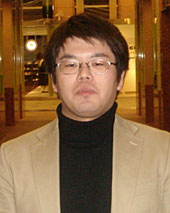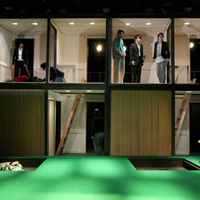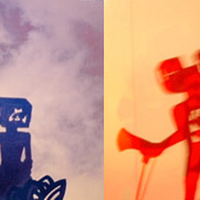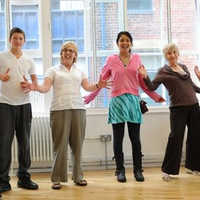Japan: dance critic reflects
 [caption id="attachment_2811" align="alignright" width="170" caption="Daisuke Muto, Japan "]
[caption id="attachment_2811" align="alignright" width="170" caption="Daisuke Muto, Japan "] [/caption]
[/caption]Contributed by Ive Stevenheydens
'We are interrelated through history' Daisuke Muto, Japan
"I like to interpret the word 'contemporary' literally: a moment in time," says Daisuke Muto, Tokyo based dance critic and teacher at the Gamma Prefectural Women's University. "From this point of view, its content is already very rich in meaning and ripe for interpretation. Nevertheless, my recent focal point of interest lies in the geopolitics of performance. In this sense, I would like to refer to the literature that has been published on the Ainu, a minority of people that live in North Japan, on the island of Hokkaido. This region is still naturally very beautiful. In the 17th century, the Ainu lived off agriculture and fishing, and they also developed a strong metal industry. They knew and still know how to live without pollution. By the end of the 19th century, Japan colonised and exploited the region and the Ainu, which has destroyed their lives and their culture. Tessa-Morris Suzuki, teacher at the Austrian University, is studying this subject, discussing and questioning sequences of history. One of her conclusions is that every moment in time, the same things happen over again. The Ainu people – few of them are left – are once again developing their own language. However, the so-called 'developed' Japanese will still perceive these people as underdeveloped, as inferior. The interesting point in Suzuki's writings and the point that I am trying to make is the fact that we are interrelated through history. Another point is that the image of the other is historically conditioned and continuously oppressing itself."
Muto says that for Japanese people, the region of Asia is perceived as a controversial idea: "At the end of the 19th century, Japan began some kind of modernisation. At that point, the country was adopted as a part of Europe. At that point in time, we all were trying to get out of Asia and into Europe. Today, this is an old fashioned idea that is very much still alive in Japan. We are still under the politically protective umbrella of the U.S. and its forces. Japan and the Japanese have a very ambivalent status in the world. In the West we will perform as Asian, but when we are faced with Asian people we will perform as Westerners. This idea goes back to the 19th century but it is still very much out there. In fact, nothing has really changed."
Familiar sphere
At the same time, Muto is keen to name some pioneers who left their landmarks on the map of contemporary Japanese dance. Muto: "In the 1990s Saburo Teshigawara stood out as a very influential choreographer. At the same time, 1995 was a crucial moment for Japanese society. There were the gas attacks in the metro by fanatic religious groups, and in the same year we had a very big earthquake in the west of Japan. These events destroyed our notion of security. Related to this, Japanese public culture shrunk into the intimate and private sphere. The community was broken down; we all wanted to go back within a very familiar domain and limited ourselves to this arena. At this time, a cluster of choreographers and performances arose that focussed on the the body from an intimate perspective. These artists performed in very small places, their work was extremely delicate, just touching and researching small parts of the body. This work is what has interested me since my first steps into the field of dance. When this introspective tendency occurred in society, I really wondered how we could be like this? How could we stay in our own familiar and ordinary sphere, not knowing or not wanting to know what happens outside? I still find this a totally ideological understanding of the world. So to pursue these questions, I started to analyse the political situation in Japan and the countries that surround us. If you look at these issues from this position, we cannot ignore Asia. Japanese never compare themselves with Asian people in context of (performance) art. I personally have a very strong urge to know what is happening in Asia, what is hidden from me. Even via media like Google things are concealed from us because of the language. We cannot type Cambodian or Thai language."
'I see mostly new versions of old forms'
Alison Andrews, Performing Arts Officer in the Yorkshire region for the Arts Council England. "Defining where yesterday ends, contemporary is and tomorrow begins is a highly enjoyable exercise but an impossible act".
Read more: UK: performing arts operator reflects
There are many visions of 'the contemporary' in our region' -
In 1999, Amna Kusumo and three cultural activists founded Kelola, a national non-profit organisation that promotes the vitality of Indonesian arts.
Read more: Indonesia: performing arts operator reflects
'To face and cherish our differences and similarities'
Kentaro Matsui is a theatre critic and also Programme Director of the Tokyo based Setagaya Public Theatre, a non-profit structure funded by the City of Setagaya Council
Read more: Japanese theatre critic reflects
Back to main article:
Asia-EU: 4 performing arts operators reflect
Similar content
15 Apr 2008
15 Apr 2008
posted on
06 Mar 2012





